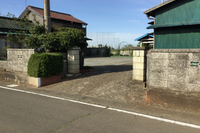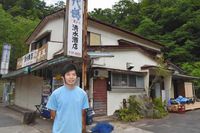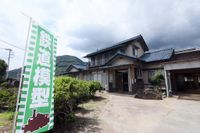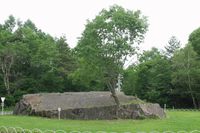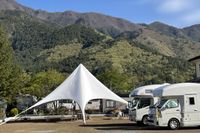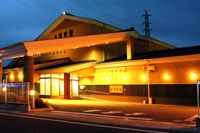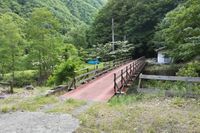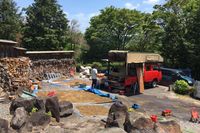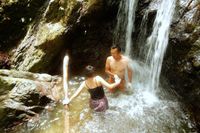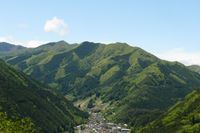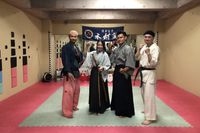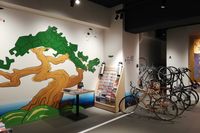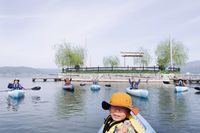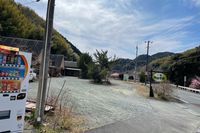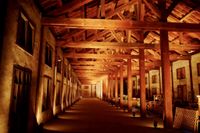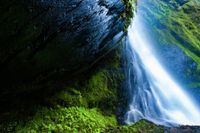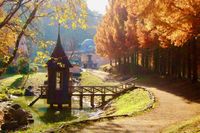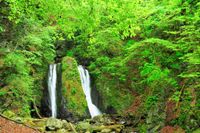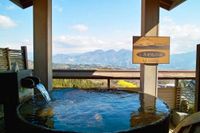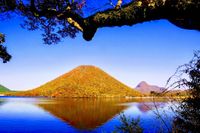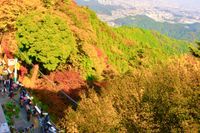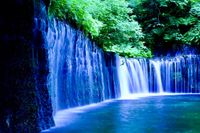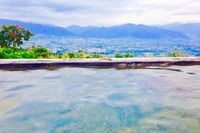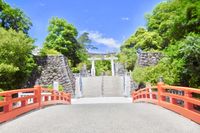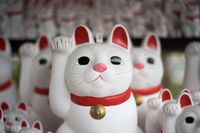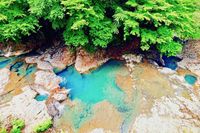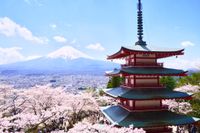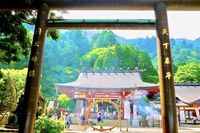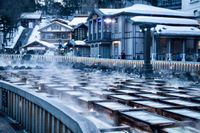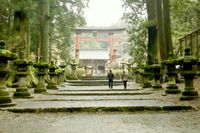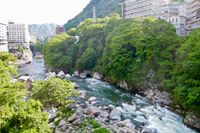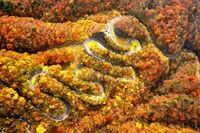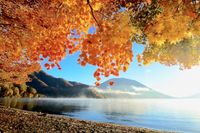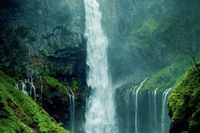Nagatoro Gorge
埼玉県/秩父郡長瀞町

Description
This is a famous valley in the upper part of the 6km Arakawa river, in Chichibu. The area is famous for its rock formations and visitors can enjoy canoeing, rafting and campings. The area is famous for its fresh water shaved ice and miso pickled pork. In autumn, one can enjoy the autumn leaves as well as apple picking.
Homepage
Address
Nearby Car Night Spots
A luxurious Niigami Pass camping car spot where you can occupy a 500 tsubo lot by yourself
¥150,000〜
/ per night群馬県 吾妻郡長野原町北軽井沢
5.0
(2)Railway Guest House Tetsunoya (hot spring available)
¥3,000〜
/ per nightYamanashi Shizume, Kasugai-cho, Fuefuki City
5.0
(15)Kawaguchiko Yatai Village
¥2,500〜
/ per nightYamanashi Kawaguchi, Fujikawaguchiko Town, Minamitsuru District
4.5
(58)Nearby Activities
Cycling in Shinjuku! From the tourist information center [INBOUND LEAGUE] which is in a good location and takes 20 minutes to Shinjuku Gyoen, Meiji Jingu and Yoyogi Park.
¥2,000〜
/ per personTokyo Shinjuku, Shijuku-ku
3.0
(0)Organic Vegetable Picking at Microbe-NaturalFarmers
¥2,500〜
/ per personKanagawa Ken Fukuda, Yamato Shi
3.0
(0)FRC Surf School (Beginners Welcome!)
¥5,400〜
/ per personKanagawa Ken Kugenuma Kaigan, Fujisawa Shi
3.0
(0)【Only Foreign Visitors】Takoyaki Party with Locals
¥5,000〜
/ per personNagano Prefecture Wakaho Kawada, Nagano City
3.0
(0)Ranking Stations
Shin Meishin Suzuka PA (inbound) RV Station Suzuka * With Power!
¥2,200〜
/ per nightMie Yamamotocho, Suzuka-shi
4.3
(157)(Bonfire BBQ) Chita Mihama Noma Beach Station
¥3,500〜
/ per nightAichi Noma, Mihamacho, Chita County
4.7
(42)Vanlife BASE | 45 min. from Narita Airport / Perfect for campervan travel/A seaside town rich in nature/Japanese countryside town/welcome traveler
¥7,000〜
/ per nightChiba Koseki, Kujukuri-machi, Sambu-gun
5.0
(61)Nearby Drive Spots
Tomioka Silk Mill
This is a silk factory that opened in 1872, and is registered as a World Heritage Site. When the country opened its borders during the Edo era(1603-1858), it was used as one of the places of production of silk which was exported to countries, supporting the Japanese economy. The place was opened with the efforts of Okuma Shigenobu, Ito Hirobumi and Shibusawa Eiichi, with operations ceasing 116 years later in 1987. The reeling yarns and storage areas used when in operation are still present and available to view by visitors.
Mitsugama Falls
This area contains three impressive waterfalls in Okutama, with a height of around 12.5m. It is truly an area to get away from the hustle and bustle of the city, with just the wind, water and the chirping of the birds. There are larger waterfalls in the upstream area, and the area is ideal of hiking.
Tove Jansson Akebono Children's Forest Park
This is a park that is a recreation of Moomin's world (a famous cartoon originating from Finland), in Hanno, Saitama. Within the park, there is a "Moomin Mansion" where there is an exhibition dedicated to the author, Tove Jansson, as well as historical items relating to Moomin itself.
Kosuge Odaki Falls
Follow a 15-minute river trail deep into a thicket of shioji trees until it reveals a majestic rock, where the rapid of Tama River breaks in half and forms an absolutely breathtaking twin waterfall display. Kosuge Odaki Falls truly is a sight to behold and a favorite of many photographers.
Ikaho Onsen
This is an old Onsen bath in Ikaho Town. It boasts 1,300 years of history and appeared in Manyoshu, a book collection of traditional Japanese poetry. The Onsen was used as a place of healing for a wounded soldier named Takeda Katsuyori, and eventually he commanded the area to be turned into an Onsen town. The area was also loved by many literary greats such as Natsume Soseki, Hagiwara Sakutaro and Noguchi Ujo. It is also famous as a place for hot spring buns and dumplings.※Credit:旅と温泉の無料写真素材 おんふぉと http://on-photo.com/
Mount Shina
This is a mountain in Gunma prefecture which has been worshipped throughout the ages. With a height of 1,449m, the mountain also has the nickname of "Haruna Fuji". The area is particularly well known for the contrasting blue of the Lake Shina with the reds and oranges of the autumn leaves.
Mount Takao
This is a 599m high holy mountain of the Shugendo religion (a fusion religion that originated in Heian Japan). The area was open to the public from 744 AD where Takao-san Yakuoin (a buddhist temple) was built. It is known as Tokyo's top autumn leaf spot, and has received three stars from the Michelin tourism guide. The area is also famous as a habit for the Japanese flying squirrel.
Shiraito Falls
This is a waterfall situated in Karuizawa. As water spouts up through the rocks, this waterfall looks attractive in all types of weather. The name derives from the fact that the water flowing down looks like white and silken threads.
Hottarakashi Onsen
This is an Onsen in Yamanashi prefecture. From the bathing area, you can see the Kofu basin below, and Mount Fuji is visible on a clear day. The onsen became well known as a place that opened early in the morning and ideal for viewing the sunrise. The name comes from the fact that there are no special advertisements or services provided, but is a place simply to have fun.
Takeda Shrine
This is a shrine that was built by Takeda Shrine Association in 1919, where the warrior Takeda Shingen is deified as a shrine God. It is settled on the grounds of where the lodging house known as "Tutujigasaki Yakata", built by Takeda Nobutora. After the Russo-Japanese war in 1904, peopled wished for warriors and soldiers to be enshrined in the temple, which is why Takeda Shingen, a great warrior during the Sengoku era(1467-1600), was enshrined here, and is revered as the "Victorious God" even today.
Gotokuji Temple
This is a Soto sect temple built in 1480 by Kira Masatada. It is said to be the birth place of the "Maneki-Neko" (waving cat) where there is a legend that Ii Naosuke built a temple here when invited by a cat to escape from a great thunderstorm. The temple contains thousands of Maneki-Neko, and is the only temple where the cats are revered.
Shima no Oketsu
Here, one can see the 8 large potholes within Shimagawa River. These potholes are formed where rocks and sand particles flow in circles in the same areas and gradually erode at the river bed. Over tens of thousands of years, it forms a natural wonder that can be viewed today.
Arakura Fuji Sengen Jinja Shrine
This is a temple built in 705 AD, housing the Gods known as Konohana-Sakuyahime, Ninigi no Mikoto and Oyamatsumino-okami. During the Sengoku Era(1467-1600), the warrior Takeda Nobutora visited here, praying for war victory. The area is especially famous for what has been oft known as the "best view in Mount Fuji" with the 5 storied pagoda, cherry blossoms and Mount Fuji in the background, to produce some truly postcard-worthy camera shots.
Oyama Afuri Shrine
This shrine was built in 200BC. It houses the Gods Oyamatsumino-okami (Mountain God)Takaokamino-kami (Water God)Oikazuchino-kami (Thunder God) . Historically the mountain was considered a place of worship, and was visited by all types, from warriors to common people. Minamoto Yoritomo offered a sword to defeat Taira clan, and it is said that from this the culture of "Osamedachi" (sword offering) was born, and its influence can even be seen in Japanese Rakugo comedy and Ukiyo-e art.
Kusatsu Onsen
This is a famous onsen located at the foot of Kusatsu Shirane Volcano. It was named as one of the top Onsens in the country during the Edo period(1603-1868). The onsen is special for its large amount of natural water and is often used for research on "Yumomi", which is a process of inserting a hexagonal plate to reduce the feeling of heat when initially entering a warm bath.
Kitaguchi Hongu Fuji Sengen Jinja Shrine
A shrine built in the garden of Kino Toyohiro in 788 AD, this is a World Heritage Site along with Mount Fuji. The main Gods enshrined in the temple are Konohana-Sakuyahime, Ninigi no Mikoto and Oyamatsumino-okami. It is situated at the foot of the climbing path of Mount Fuji known as Yoshida-guchi, and many mountain climbers who worshipped Mount Fuji visited here. In front of the hall of worshippers there are two 1000 year old holy trees known as the "Fuji-Taro Cedar" and the "Fuji Cypress tree of married couples".
Minakami Onsen
This is an Onsen in Minakami town. It is situated at the upper part of Tone River, where it is surrounded by the Suwa Gorge and autumnal leaves. The area is popular for the horse drawn carts that run around this area. The area is also known for being a great spot for ski, rafting and other outdoor sports.
Irohazaka Route
This is a hilly road (number 120) which has 48 turns - the same number of characters in the Iroha song. The first and second parts are separated by a hill, where there are two resting spots - Kurokami-daira and Akechi-daira where one can view Kegon Falls and Lake Chuzenji. The road is famous for appearing in the Japanese arcade game Initial D.
Lake Chuzenji
This is a lake formed by the eruption of Mount Nantai 20,000 years ago, inside Nikko National Park. A priest named Shodo, discovered the area, and was originally used as a training ground based on faith and worship in Buddhism. The area is particularly popular in autumn due to the autumn leaves that appear here.
Kegon Falls
This is one of Japan's largest waterfalls in Nikko City. The 97 meter waterfall drop is quite spectacular, and visitors can view it relatively up close. The waterfall was discovered by a priest named Shodo and the name comes from buddhist scripture.

